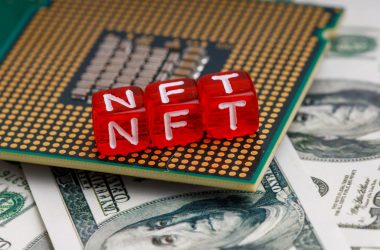The metaverse is frequently described in such technologically advanced terms that it’s difficult to see how you can participate in it right now. However, the truth is that metaverse-like worlds have existed for decades, and you may have already visited some of them without realizing it.
What Is the Metaverse?
The metaverse is a permanent, online universe that blurs the barriers between reality and virtual reality, according to venture capitalist Matthew Ball’s theory. Moreover, the metaverse is a 24/7 online environment populated by economics that rewards a new network of artists and infrastructure providers.
Importantly, this economy is based on interoperable in-game assets. Ball uses the analogy of a skin for a Counter-Strike pistol that could easily be translated into a cosmetic item for a Fortnite weapon, which differs dramatically from the closed-off, isolated ecosystem, that we’re used to today.
While Mark Zuckerberg’s Meta (previously Facebook) has its own thoughts on the metaverse, the cryptocurrency community believes that blockchain technology is a natural fit for this unique online environment. Early thoughts of a creator-led, crypto, and NFT-powered economy may be seen in crypto games such as The Sandbox and Decentraland.
Here’s what you are able to do today in the metaverse:
Create, Explore, and Enjoy Virtual Worlds
With regards to the greater part of a decade, videogames such as Minecraft and Roblox have provided metaverse-type experiences; Second Life, as well as Eve Online, have been active since 2003, while World of Warcraft debuted in 2004.
Thanks to its creator-led market and large sandbox world, Second Life is among the closest metaverse analogs. In Second Life, you can do whatever you want, and some people have been recorded living off the virtual land, collecting the game’s in-game money system, Linden dollars, and participating in events.
Crypto simulations such as The Sandbox and Decentraland are turning the videogame economy on its head in the 2020s by including digital assets. You can utilize the games’ fungible governance tokens to change the settings of the virtual environment you live, explore, and develop, as well as import your own non-fungible tokens (NFT) to buy virtual land.
The Sandbox employs fungible SAND tokens as in-game currency and NFTs to represent plots of land and other game-native goods – the types of assets that decorate your avatar – while Decentraland uses fungible MANA tokens and corresponding non-fungibles for virtual assets.
You only need to connect a crypto wallet like MetaMask to create an account. However, with Decentraland, you can participate as a guest without having to connect a crypto wallet. Because the Sandbox is still in alpha (testing), and the first season has ended, you won’t be able to play it until the Alpha Season 2 is available, which has yet to be determined.
Create Your Own Avatar
Your avatar is an essential aspect of your online persona. Regarding some, NFTs with profile pictures, such as CryptoPunks or the Bored Ape Yacht Club, are suitable for Discord and Twitter, which are primarily text-based sites where a 2D image suffices. Ready Player Me, for example, promises to be able to employ composable digital identities in 1,330 apps and games, like Nike’s RTFKT, Somnium Space, and VR Chat. RTFKT also sells NFT sneakers and avatars for its planned “Avatar project;” however, it’s uncertain which games may allow you to “wear” these.
Invest in Digital Assets
Of course, if you don’t want to give up reality just yet, you can always put your money into the buzzing virtual worlds. There are numerous approaches to this. You may buy NFT avatar drops from Nike or Adidas, for example. Furthermore, you may bet on digital land or in-game items, such as those available on Axie Infinity, Decentraland, or The Sandbox.
You might also invest in fungible tokens, which are used as in-game currency in those games. If you’re not sure which token to invest in, you could always put your money into a metaverse index fund like Index Coop’s Metaverse Index (MVI). The MVI adjusts its portfolio based on the most popular metaverse coins at the time.
Furthermore, you might invest in the stock of augmented reality and metaverse organizations if crypto isn’t your thing. Meta is one firm that is counting significantly on the potential of virtual and augmented reality; according to Seeking Alpha, the corporation would have invested $70 billion on the notion between 2014 and 2023. Private investments, as well as VR technology and metaverse equities, are also on the agenda.
The Bottom Line
Having an understanding of the metaverse can open an entire plethora of opportunities. The entire concept is still very new and certainly warrants interest from investors.
WeInvests is a financial portal-based research agency. We do our utmost best to offer reliable and unbiased information about crypto, finance, trading and stocks. However, we do not offer financial advice and users should always carry out their own research.
Read More













